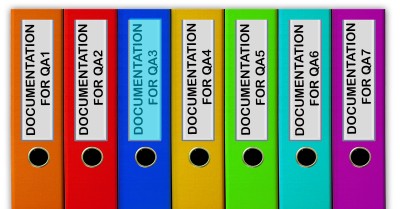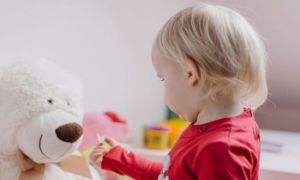Quality Area 3 – Physical environment is to ensure it is safe and designed to provide a range of experiences to engage children in a variety of experiences to protect children's development and learning.
The following lists the documentation services are required to have in order to support achievement of QA3 in each element.
3.1 - The Design Of The Facilities Is Appropriate For The Operation Of A Service.
3.1.1 – Outdoor and indoor spaces, buildings, fixtures and fittings are suitable for their purpose, including supporting the access of every child.
Documentation to support this includes:
- the service’s approach to grouping children
- plans of indoor and outdoor areas, including information about soft fall plans that show an evaluation of and changes to the placement of furniture and equipment, if available
- where the service shares multi-purpose areas with a school, documented risk assessment of the physical environment in relation to, access to, and use of, multipurpose areas, the impact of multi-purpose areas on service delivery, the service’s approach to sharing the multi-purpose areas with the school
- the service’s registration documentation and assessments of educators’ approved premises
3.1.2 – Premises, furniture and equipment are safe, clean and well maintained.
Documentation to support this includes:
- documented procedures, correspondence and schedules relating to, maintenance and safety checks, the cleaning of buildings, premises, furniture and equipment, adhering to manufacturers’ advice when using and cleaning furniture and equipment
- documents that confirm equipment meets Australian Standards, for example for cots, other bedding equipment and accessories
- risk assessments of the physical environment
- where relevant, a management plan that is in place to protect the safety of children, families and service staff while major work is occurring at the service
3.2 – The Service Environment Is Inclusive, Promotes Competence and Supports Exploration and Play-Based Learning.
3.2.1 – Outdoor and indoor spaces are organized and adapted to support every child’s participation and to engage every child in quality experiences in built and natural environments.
Documentation to support this includes:
- documented learning programs that pay equal attention to planning outdoor and indoor environments to support children’s learning outcomes and extend on child-led learning, outline opportunities for children to engage in outdoor and indoor experiences, such as dramatic play, construction, music and exploration
- incorporate opportunities for children to, be active and wholly engaged for long periods of uninterrupted play, spend time in a quiet area away from other children if they wish, choose whether they wish to participate in large and small group activities
- the statement of philosophy that describes the service’s approach to inclusion
- documented evidence that indicates the educational leader, nominated supervisors, educators and co-ordinators work collaboratively with family members, specialists and/or resource agencies to plan for the inclusion of children with additional needs, access adaptive equipment to support children’s requirements, facilitate access to support services required while the child is at the service
- evidence that strategies are in place to ensure that children in residences without direct access to outdoor environments—for example, high-rise units— have opportunities to access outdoor environments
3.2.2 – Resources, materials and equipment allow for multiple uses, are sufficient in number and enable every child to engage in play-based learning.
Documentation to support this includes:
- documentation and learning programs that demonstrate links between the arrangement and choice of resources, materials and equipment and learning outcomes for children
- plans for the arrangement of indoor and outdoor spaces to create inviting learning environments and documentation of how children’s ideas have influenced these plans
- photographs of children using materials and equipment in a variety of ways
3.2.3 – The service cares for the environment and supports children to become environmentally responsible.
Documents to support this include:
- documentation of children’s learning about environmental and sustainability issues
- policies that promote children’s understanding of their responsibility to care for the environment and the development of life skills (such as growing and preparing food, waste reduction and recycling)
- planning documents that support children’s learning through investigation and exploration of the natural environment
- photographs and displays highlighting children’s understanding and learning of the natural environment, including their contributions
Click to download: Supporting Doc QA3 Checklist - a checklist of documentation (listed above) that is required in order to achieve Quality Area 3 - Physical Environment.
For a list of outcomes under each element: How To Achieve Quality Area 3



 Here is the list of the EYLF Learning Outcomes that you can use as a guide or reference for your documentation and planning. The EYLF
Here is the list of the EYLF Learning Outcomes that you can use as a guide or reference for your documentation and planning. The EYLF The EYLF is a guide which consists of Principles, Practices and 5 main Learning Outcomes along with each of their sub outcomes, based on identity,
The EYLF is a guide which consists of Principles, Practices and 5 main Learning Outcomes along with each of their sub outcomes, based on identity, This is a guide on How to Write a Learning Story. It provides information on What Is A Learning Story, Writing A Learning Story, Sample
This is a guide on How to Write a Learning Story. It provides information on What Is A Learning Story, Writing A Learning Story, Sample One of the most important types of documentation methods that educators needs to be familiar with are “observations”. Observations are crucial for all early childhood
One of the most important types of documentation methods that educators needs to be familiar with are “observations”. Observations are crucial for all early childhood To support children achieve learning outcomes from the EYLF Framework, the following list gives educators examples of how to promote children's learning in each individual
To support children achieve learning outcomes from the EYLF Framework, the following list gives educators examples of how to promote children's learning in each individual Reflective practice is learning from everyday situations and issues and concerns that arise which form part of our daily routine while working in an early
Reflective practice is learning from everyday situations and issues and concerns that arise which form part of our daily routine while working in an early Within Australia, Programming and Planning is reflected and supported by the Early Years Learning Framework. Educators within early childhood settings, use the EYLF to guide
Within Australia, Programming and Planning is reflected and supported by the Early Years Learning Framework. Educators within early childhood settings, use the EYLF to guide When observing children, it's important that we use a range of different observation methods from running records, learning stories to photographs and work samples. Using
When observing children, it's important that we use a range of different observation methods from running records, learning stories to photographs and work samples. Using This is a guide for educators on what to observe under each sub learning outcome from the EYLF Framework, when a child is engaged in
This is a guide for educators on what to observe under each sub learning outcome from the EYLF Framework, when a child is engaged in The Early Years Learning Framework describes the curriculum as “all the interactions, experiences, activities, routines and events, planned and unplanned, that occur in an environment
The Early Years Learning Framework describes the curriculum as “all the interactions, experiences, activities, routines and events, planned and unplanned, that occur in an environment


